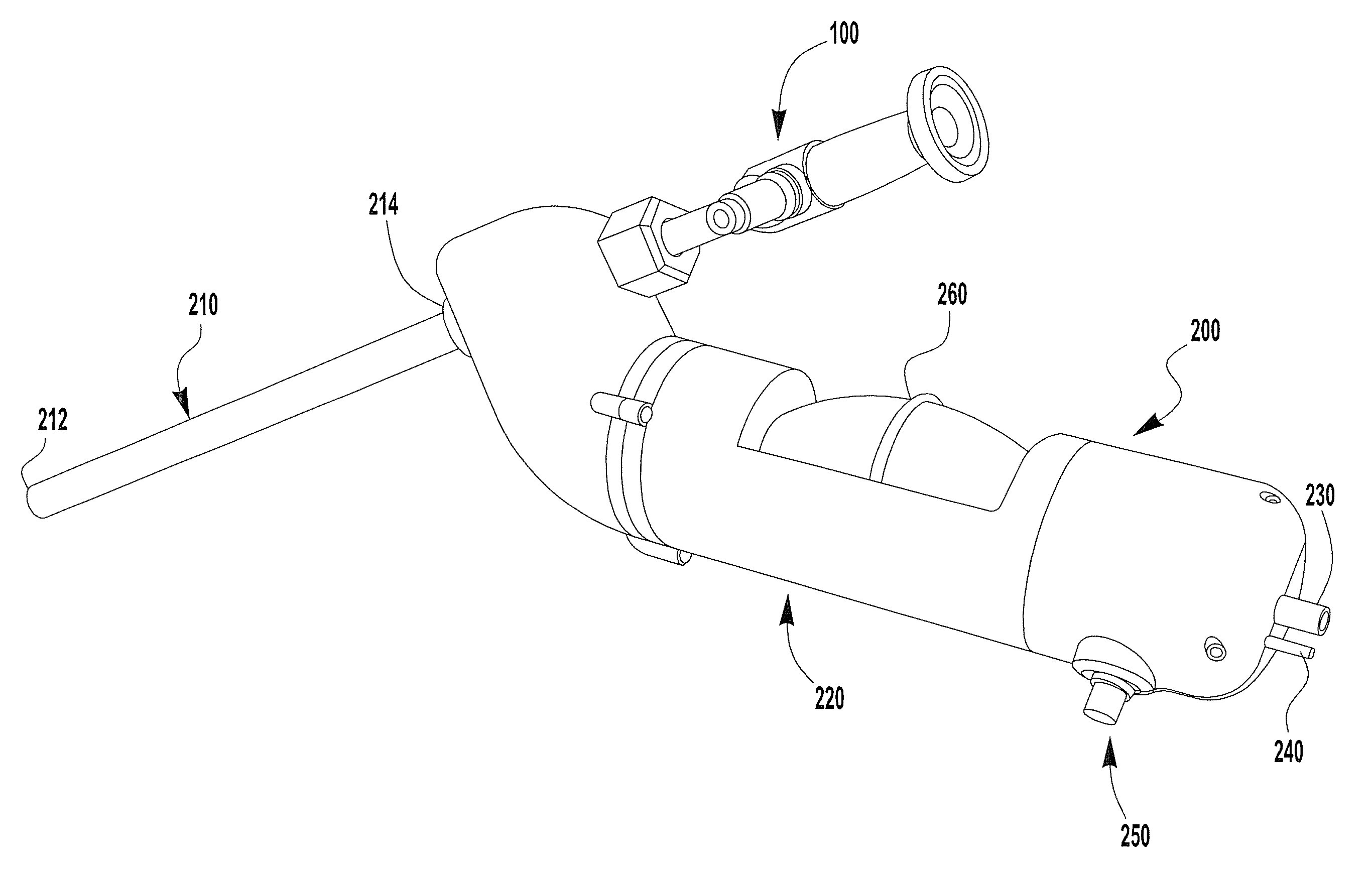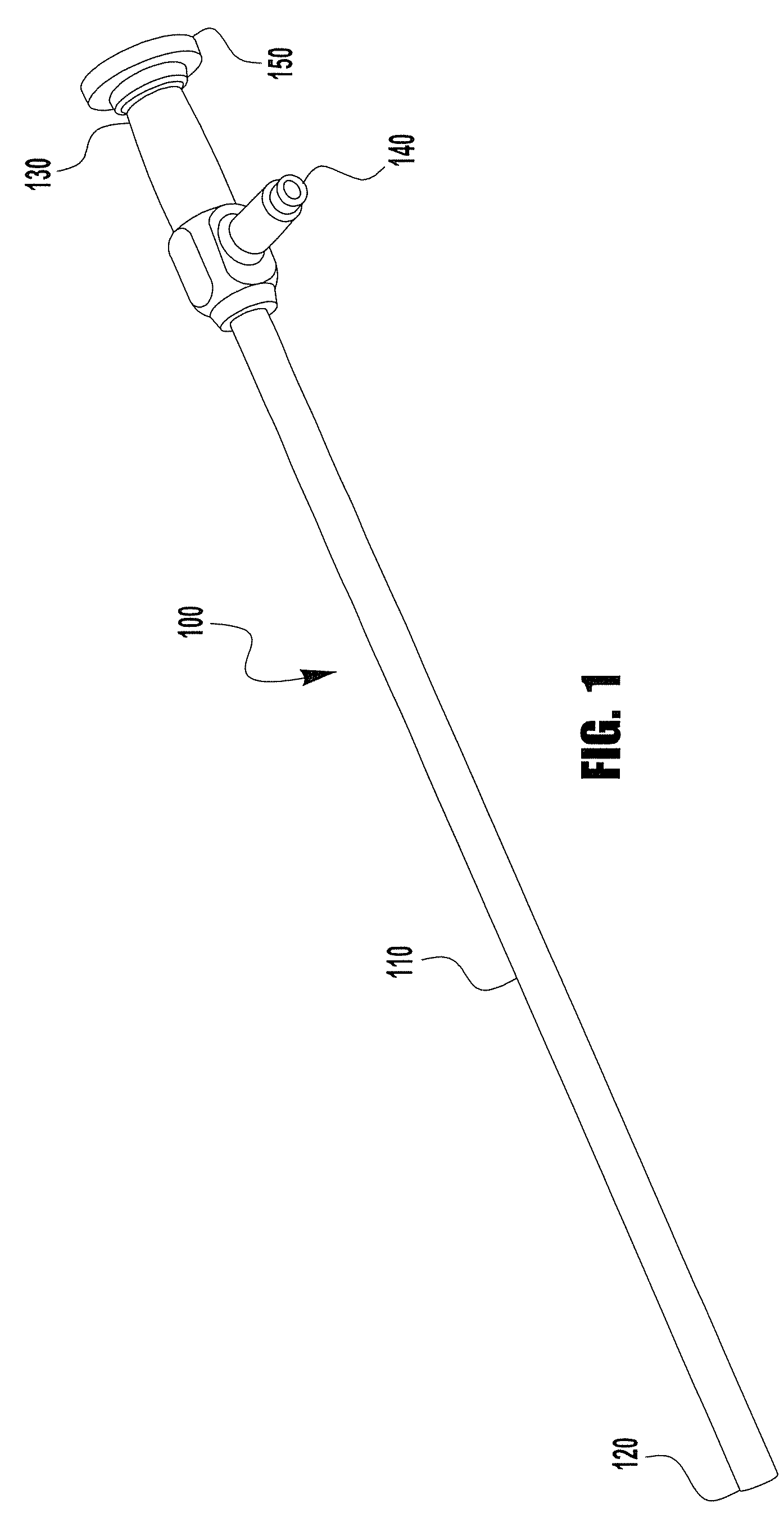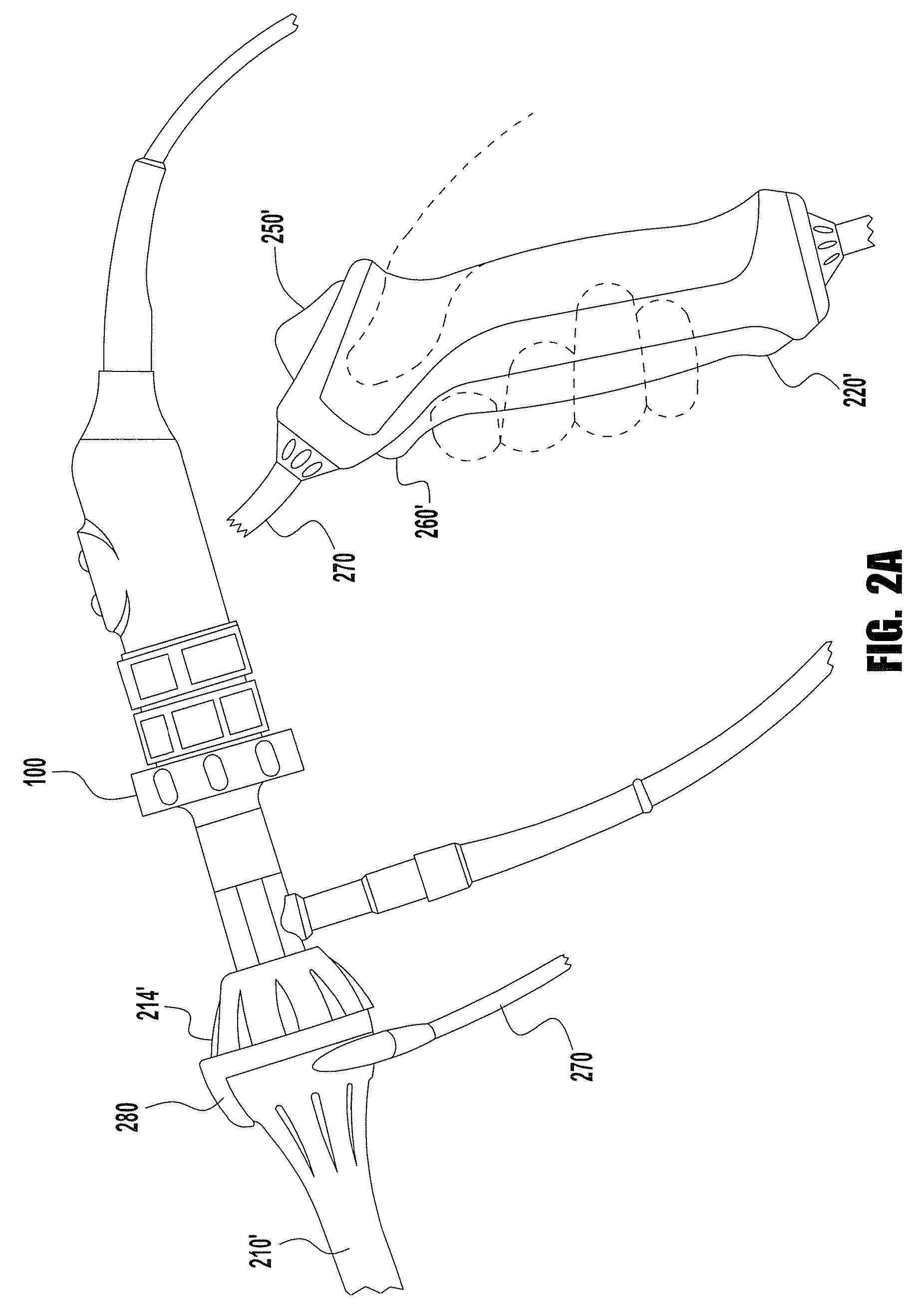Device for maintaining visualization with surgical scopes
a technology of surgical scopes and scopes, which is applied in the field of devices for maintaining visualization with surgical scopes, can solve the problems of generating mist, smoke and other debris, inconvenient for the scope operator and the surgeon, and becoming suspended throughout the expanded abdominal spa
- Summary
- Abstract
- Description
- Claims
- Application Information
AI Technical Summary
Benefits of technology
Problems solved by technology
Method used
Image
Examples
example 1
Effect of Venting and Incidence of Scope Removal
[0100]Evaluation of effect of venting on insufflator function was evaluated during a laparoscopic surgical procedure. The ambient surgical room temperature was 67*F, the temperature of the carbon dioxide supply was 60 F, and the room humidity was 74%. The following general observations of insufflator function were recorded: after establishing constant pressure in the abdomen sufficient to shut off insufflator operation, followed by a sudden pressure drop in the surgical cavity, there was a 2-3 sec lag before the insufflator restarted. During the standard laparoscopic procedure, the insufflator was in inflation mode ˜60% of time, and cycled off for a maximum time of about 11 sec.
[0101]During a hand assisted laparoscopic procedure, the insufflator was in inflation mode˜75% of time, and cycled off for a maximum time of about 5 sec. During the standard laparoscopic procedure, with a slow continuous leak at the stop cock, with the insufflat...
example 2
Evaluation of Fogging
[0103]In a device that simulates the humidity and temperature conditions of an animal abdominal cavity during a laparoscopic procedure, the effects of fogging on a laparoscopic lens was evaluated. Chamber temperature of 99.4-99.7° F., and an initial scope lens temperature of 70.1-72.1° F., humidity was 75-77% RH. FIG. 8 shows the change in scope temperature at the lens and various locations along its length at various times at the chambers humidity.
[0104]Relative humidity is understood as the Ratio of water vapor (dew point). Above the line corresponding to the relative humidity in the chamber, no condensation is observed; below the line, condensation is observed. The principle was observed in the study, wherein, upon initial insertion of the scope into the chamber, fogging immediately occurred and visualization of an object in the chamber was obscured. It was observed that visualization of the object improved as the scope heated up above dew point temperature, ...
example 3
Evaluation of Accumulator Reservoir Function
[0105]Testing was performed in a simulator as described in EXAMPLE 2 to compare insufflator function with and with out an accumulator. The conditions of testing were similar for each trial, with chamber temperature of 99.4-99.7° F., and an initial scope lens temperature of 70.1-72.1° F., humidity was 75-77% RH.
[0106]The defogging threshold was determined in later testing. A valve was placed inline with an embodiment of the view optimizer described herein and attached to a compliant reservoir. This valve was slowly closed until the airflow was restricted to the point where defogging did not occur. Two trials were performed with the chamber temperature being 102.9-103.9° F. with an initial scope lens temperature of 70.5-70.9° F., humidity was 75-76% RH. Observation of the data recorder showed that at steady state, the maximum peak flow was registered at 1.3V during this time. The voltage of the sensor at 0 flow was measured pretest at 1.228V...
PUM
 Login to View More
Login to View More Abstract
Description
Claims
Application Information
 Login to View More
Login to View More - R&D
- Intellectual Property
- Life Sciences
- Materials
- Tech Scout
- Unparalleled Data Quality
- Higher Quality Content
- 60% Fewer Hallucinations
Browse by: Latest US Patents, China's latest patents, Technical Efficacy Thesaurus, Application Domain, Technology Topic, Popular Technical Reports.
© 2025 PatSnap. All rights reserved.Legal|Privacy policy|Modern Slavery Act Transparency Statement|Sitemap|About US| Contact US: help@patsnap.com



